
Roots
The quiet hum of the earth beneath our feet holds ancient whispers, echoes of wisdom passed through generations, often found in the most unexpected corners of our lives. For many, this wisdom resides in the strands that crown us, in the very practices that have shaped hair care for millennia. It is a subtle invitation, this exploration, into the profound connection between the traditions of our ancestors and the intricate science now unveiling the secrets of scalp wellness. This section begins a gentle inquiry into the foundational elements of textured hair, exploring how the innate understanding held by those who came before us often aligns with, or even anticipates, the discoveries of modern trichology.
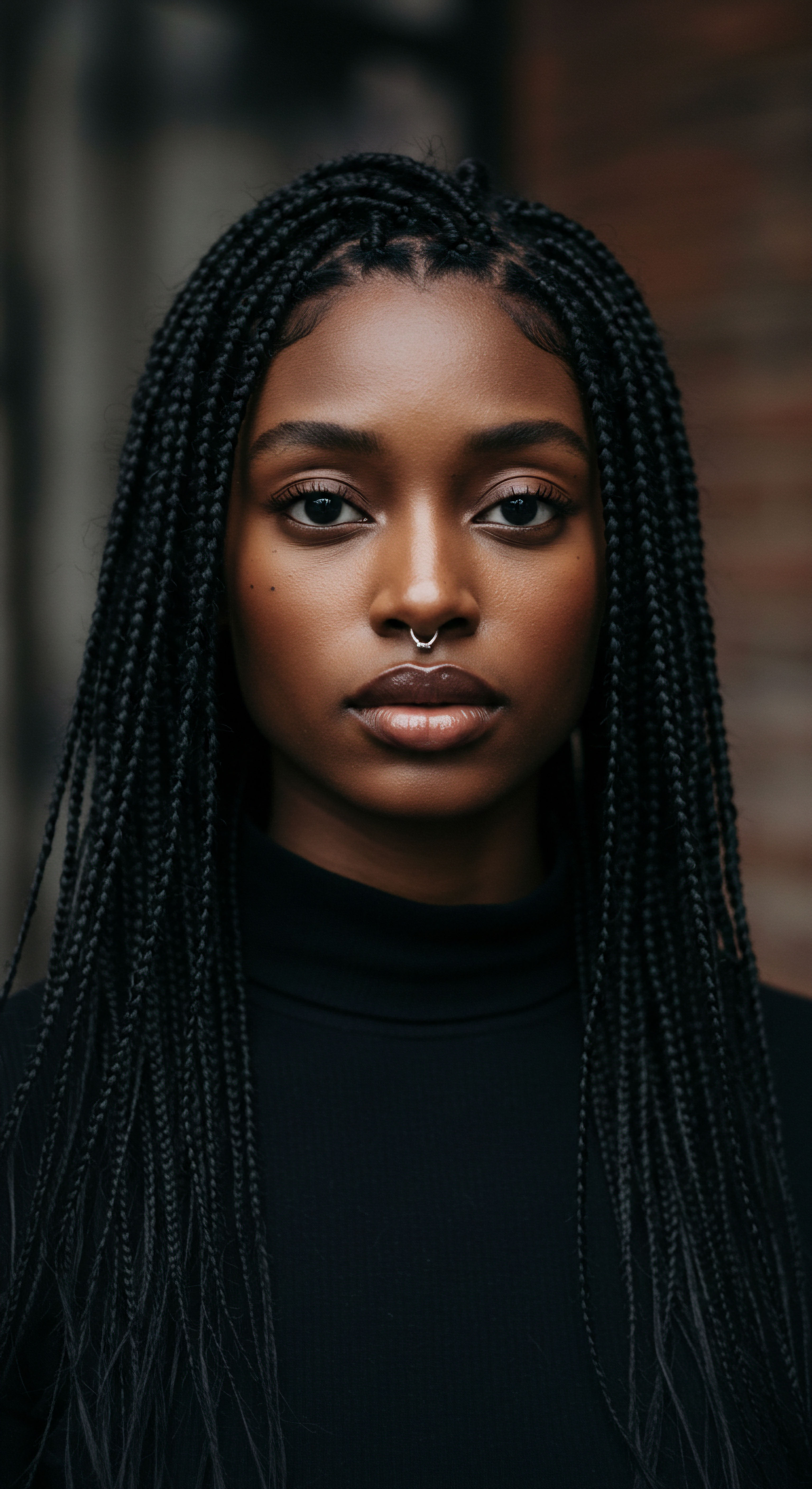
The Architecture of Textured Hair
Each coil, kink, and wave of textured hair presents a marvel of natural engineering, a unique structure that distinguishes it from straighter counterparts. From a microscopic perspective, the elliptical shape of the hair follicle itself dictates the curl pattern, creating a strand that spirals as it grows. This inherent geometry means that textured hair often possesses more cuticle layers, offering a robust shield when healthy, yet also presenting more points of potential vulnerability to environmental stressors or mechanical manipulation. Understanding this fundamental architecture, often intuited through generations of lived experience, forms the basis of truly effective care.
Textured hair’s unique follicular structure shapes its distinct curl patterns and protective qualities.
Beyond the visible curl, the internal composition of textured hair, particularly its distribution of disulfide bonds, contributes to its strength and elasticity. However, these bonds also create areas of natural weakness, points where the strand can bend sharply, making it more prone to breakage if not handled with mindful care. Ancestral practices, often involving gentle handling and specific styling techniques, implicitly acknowledged these delicate points, prioritizing methods that minimized stress on the hair shaft.

How Hair Grows and Why It Matters
The life cycle of a hair strand, from its active growth phase (anagen) to its resting (telogen) and shedding (exogen) stages, is a universal biological rhythm. For textured hair, the anagen phase, while often robust, can be particularly sensitive to disruption. Factors like chronic tension from certain styles, inflammation on the scalp, or nutritional deficiencies can prematurely shorten this growth period, leading to hair that struggles to reach its full potential length or density. Traditional communities, through dietary customs rich in essential nutrients and styling choices that favored length retention, intuitively supported a longer, healthier growth cycle.
Consider the impact of consistent, gentle scalp massage, a practice common in many ancestral hair rituals. Modern science now confirms that scalp massage can increase blood flow to the hair follicles, potentially extending the anagen phase and improving nutrient delivery. A study published in the Journal of Physical Therapy Science found that regular scalp massage could lead to increased hair thickness and density, suggesting a tangible scientific basis for these time-honored traditions. This direct correlation between ancient touch and modern scientific validation underscores the profound, often unarticulated, wisdom embedded in these practices.
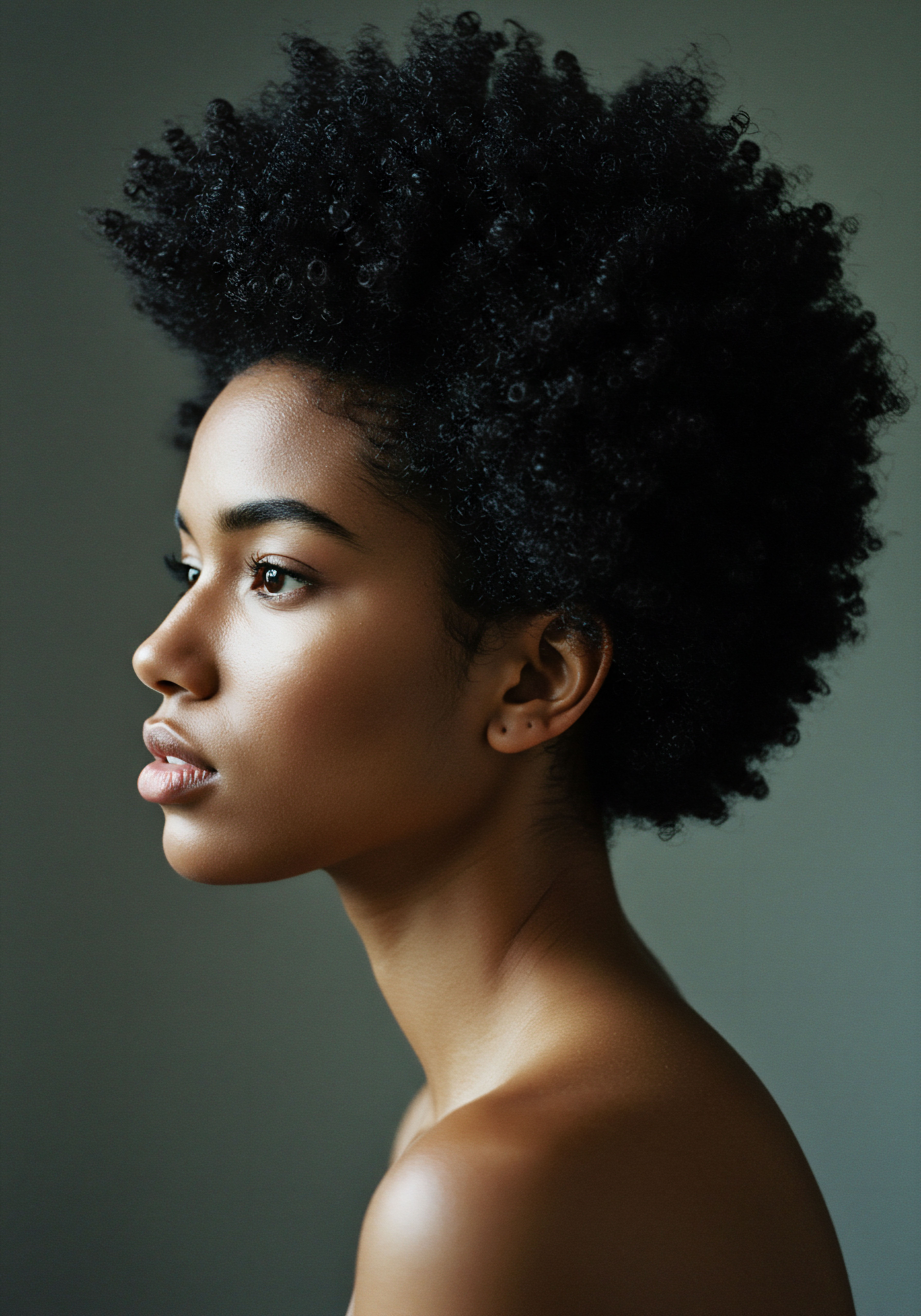
Ancestral Wisdom and the Scalp Ecosystem
The scalp, a vibrant ecosystem, hosts a complex community of microorganisms, a delicate balance essential for follicular health. Disruptions to this balance, whether from harsh chemicals, excessive washing, or neglect, can lead to issues like dryness, irritation, or even conditions like seborrheic dermatitis. Ancestral practices, frequently relying on natural cleansers and emollients sourced directly from the earth, often maintained a harmonious scalp environment. These natural ingredients, such as saponin-rich plants or nourishing plant oils, cleansed without stripping, allowing the scalp’s beneficial microbiota to thrive.
The understanding of scalp health, though not articulated in germ theory terms, was deeply practical. A healthy scalp was observed to support healthy hair. This empirical knowledge guided the selection of specific herbs, clays, and oils for their perceived soothing, cleansing, or stimulating properties. Modern science, through dermatological research and microbiome studies, is now providing the precise mechanisms behind these observed benefits, validating the wisdom of generations past.
- Follicle Shape and its influence on curl pattern.
- Hair Shaft Structure and points of vulnerability.
- Growth Cycle Sensitivity to external factors.

Ritual
As we move beyond the foundational understanding of hair, our gaze turns to the practices themselves, the daily and weekly rituals that have shaped the relationship between people and their strands across epochs. It is here, in the intentionality of care, that the practical wisdom of ancestral traditions truly comes alive, offering a blueprint for modern scalp wellness that extends far beyond superficial concerns. This section explores how the deliberate, often communal, acts of hair care from the past provide a compelling framework for contemporary routines, offering both gentle guidance and tangible methods for thriving hair.
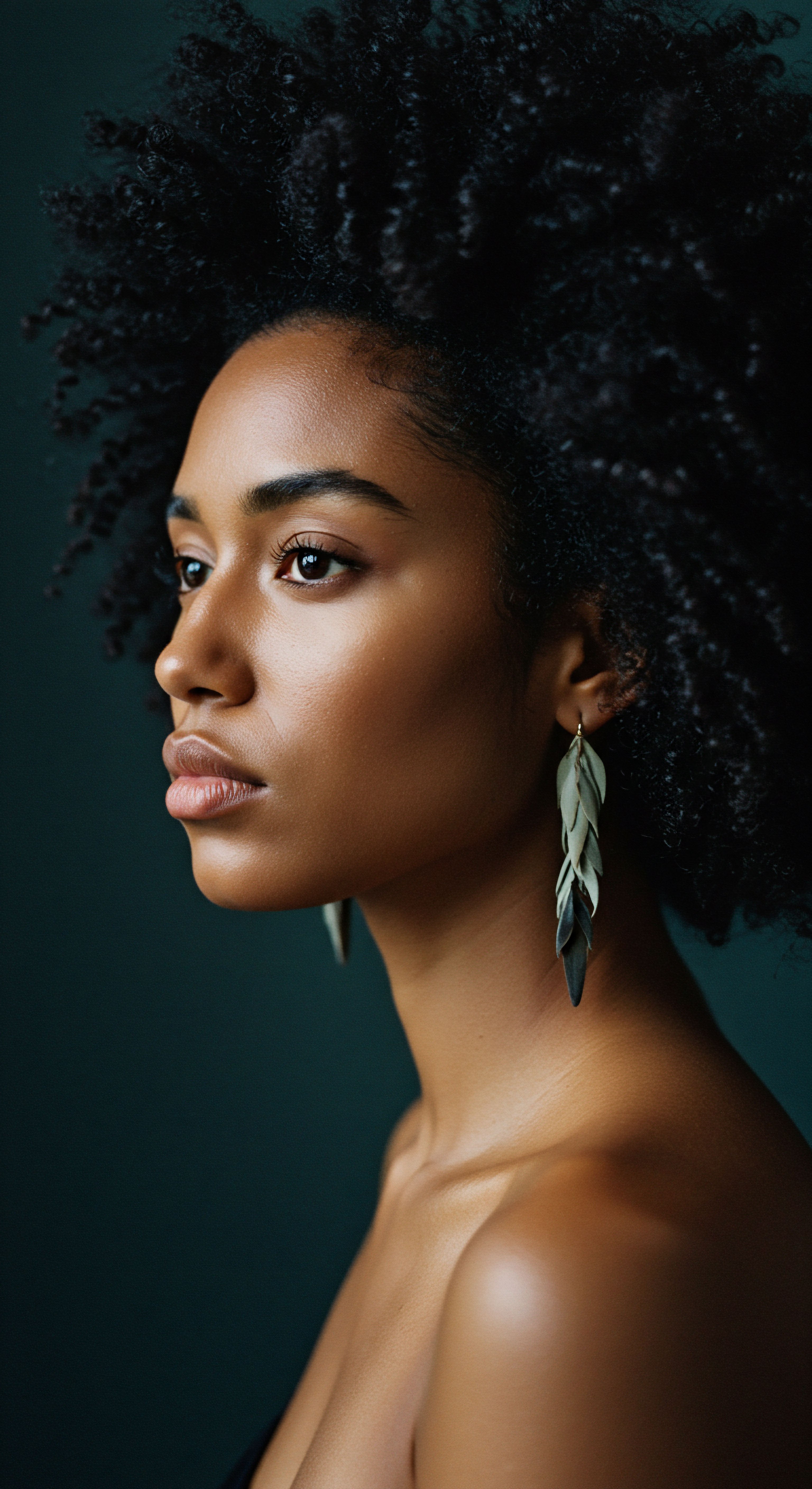
The Significance of Protective Styles
Across diverse cultures, protective styles have served as a cornerstone of hair care, shielding delicate strands from environmental damage, mechanical stress, and excessive manipulation. Braids, twists, and various forms of updos, common in many ancestral communities, allowed hair to rest, minimizing breakage and promoting length retention. The science behind this practice is clear ❉ by consolidating individual strands into larger units, these styles reduce tangling, friction, and the need for daily styling, all of which contribute to hair loss and damage.
However, the wisdom of protective styling comes with a critical caveat. While beneficial, certain historical and contemporary iterations of these styles, if executed with excessive tension, can paradoxically lead to scalp trauma. The condition known as Traction Alopecia, characterized by hair loss along the hairline or at points of extreme pulling, is a direct consequence of sustained tension on the hair follicle.
While ancestral styles aimed to protect, the scientific understanding of appropriate tension levels ensures that these protective measures do not inadvertently cause harm. This delicate balance between cultural heritage and scientific understanding underscores the ongoing evolution of hair care practices.

Cleansing and Conditioning Philosophies
The approach to cleansing and conditioning in ancestral traditions often differed significantly from modern norms, frequently prioritizing gentleness and natural ingredients. Many communities utilized plant-based cleansers, often derived from roots, barks, or leaves, that produced a mild lather without stripping the hair of its natural oils. These natural surfactants, while less aggressive than many contemporary shampoos, effectively removed dirt and debris while preserving the scalp’s lipid barrier.
Ancestral cleansing practices often preserved the scalp’s natural balance through gentle, plant-derived ingredients.
Conditioning, too, was rooted in the bounty of nature. Rich plant butters, oils, and herbal infusions were applied to soften, moisturize, and add luster to the hair. The scientific rationale behind these practices is compelling ❉ these natural emollients provide fatty acids and vitamins that nourish the hair shaft, seal the cuticle, and reduce water loss, thereby enhancing elasticity and preventing dryness. Modern scientific analysis of these traditional ingredients consistently reveals their beneficial properties, from anti-inflammatory compounds to powerful antioxidants.

Nighttime Care and Sacred Sleep
The practice of covering and protecting hair during sleep is a tradition with deep roots in many cultures, often stemming from notions of preservation, modesty, or spiritual significance. Whether through intricate wraps, soft fabrics, or specially designed head coverings, the intention was to shield the hair from tangling, breakage, and moisture loss during the night. Modern trichology wholeheartedly supports this practice, recognizing the significant mechanical stress that can occur when hair rubs against abrasive pillowcases.
Silk or satin bonnets and pillowcases, a contemporary interpretation of this ancestral wisdom, minimize friction, preventing frizz and preserving the hair’s natural moisture content. This simple act of protection, passed down through generations, finds its scientific validation in the principles of reducing mechanical abrasion and maintaining hydration, both critical for scalp and hair health. The consistent application of this nightly ritual, whether in ancient times or today, contributes profoundly to the long-term vitality of textured hair.
| Ancestral Practice Protective Braiding |
| Underlying Principle Reduced manipulation, physical shielding |
| Modern Scientific Equivalent/Understanding Minimized mechanical stress, length retention |
| Ancestral Practice Plant-Based Cleansers |
| Underlying Principle Gentle cleansing, natural balance |
| Modern Scientific Equivalent/Understanding Sulfate-free shampoos, pH-balanced formulas |
| Ancestral Practice Oil/Butter Application |
| Underlying Principle Moisture retention, lubrication |
| Modern Scientific Equivalent/Understanding Leave-in conditioners, natural oil sealants |
| Ancestral Practice Nighttime Hair Covering |
| Underlying Principle Friction reduction, moisture preservation |
| Modern Scientific Equivalent/Understanding Silk/satin bonnets, pillowcases |
| Ancestral Practice These connections highlight the enduring wisdom of traditional hair care. |
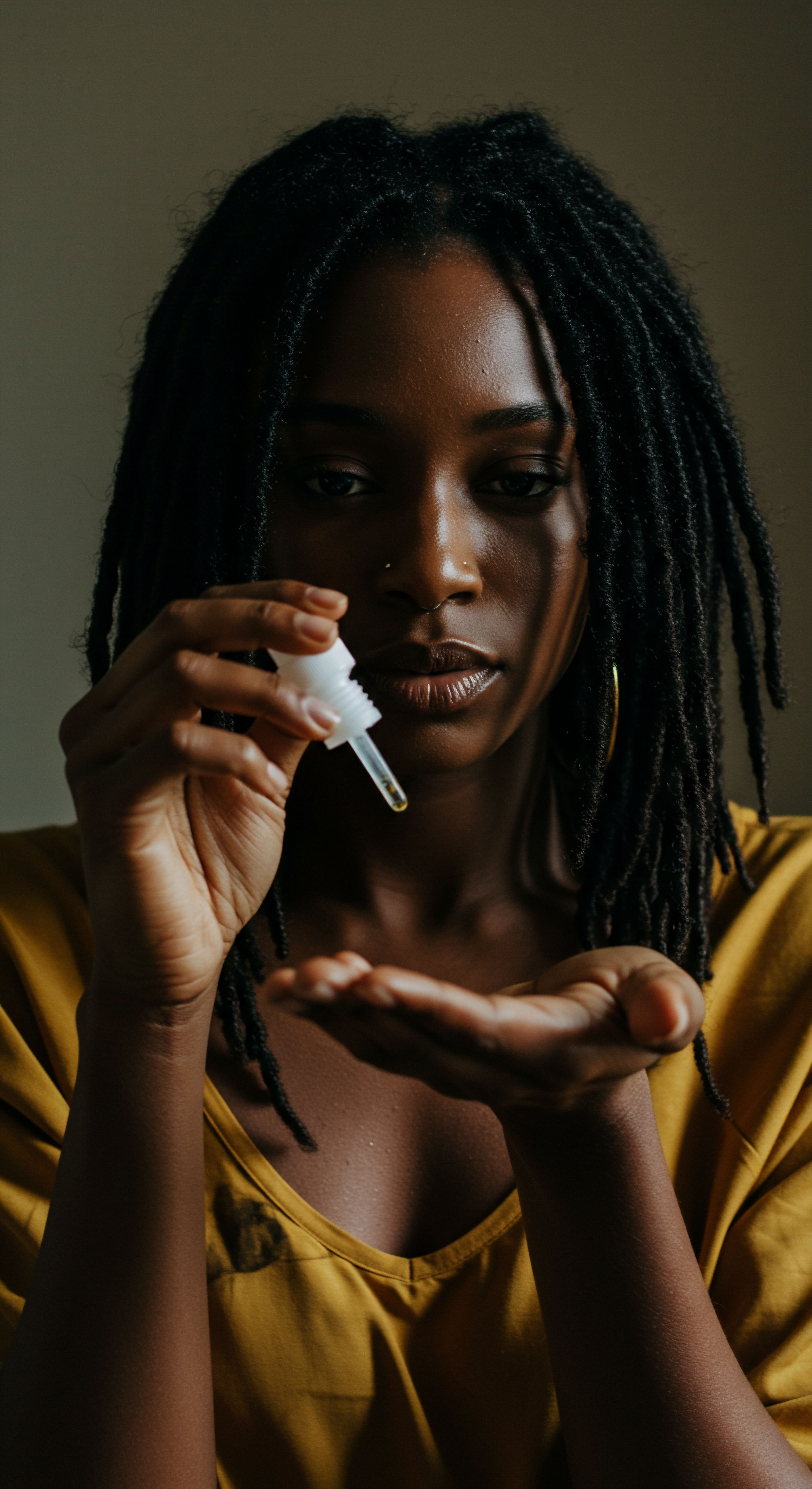
Relay
Our exploration now deepens, moving into the complex interplay where ancestral knowledge, often intuitive and culturally embedded, converges with the precise, data-driven insights of modern science. This section endeavors to bridge these realms, illuminating how the rich tapestry of heritage practices can be understood, validated, and even optimized through the lens of contemporary research. It is here that we confront the profound, multi-dimensional nature of scalp wellness, recognizing that its health is not merely biological, but profoundly shaped by psychological, social, and cultural currents.

The Scalp Microbiome and Traditional Fermentation
The intricate ecosystem of the scalp microbiome, a community of bacteria, fungi, and viruses, plays a pivotal role in maintaining scalp health. A balanced microbiome acts as a protective barrier, regulating inflammation and defending against pathogens. Disruptions, often caused by harsh chemicals or infrequent cleansing, can lead to issues ranging from dandruff to more severe inflammatory conditions. Many ancestral traditions, particularly those involving fermented rinses or herbal infusions, may have unknowingly contributed to a healthier microbiome.
For example, the use of fermented rice water, a practice documented in ancient Asian cultures for hair health, introduces beneficial bacteria and amino acids. While traditional understanding focused on the visible benefits of shine and strength, modern science suggests that the fermentation process could produce postbiotics that support a balanced scalp environment, potentially influencing the growth of beneficial microorganisms. This connection between ancient fermentation and modern microbial science presents a compelling avenue for further research into traditional scalp remedies.
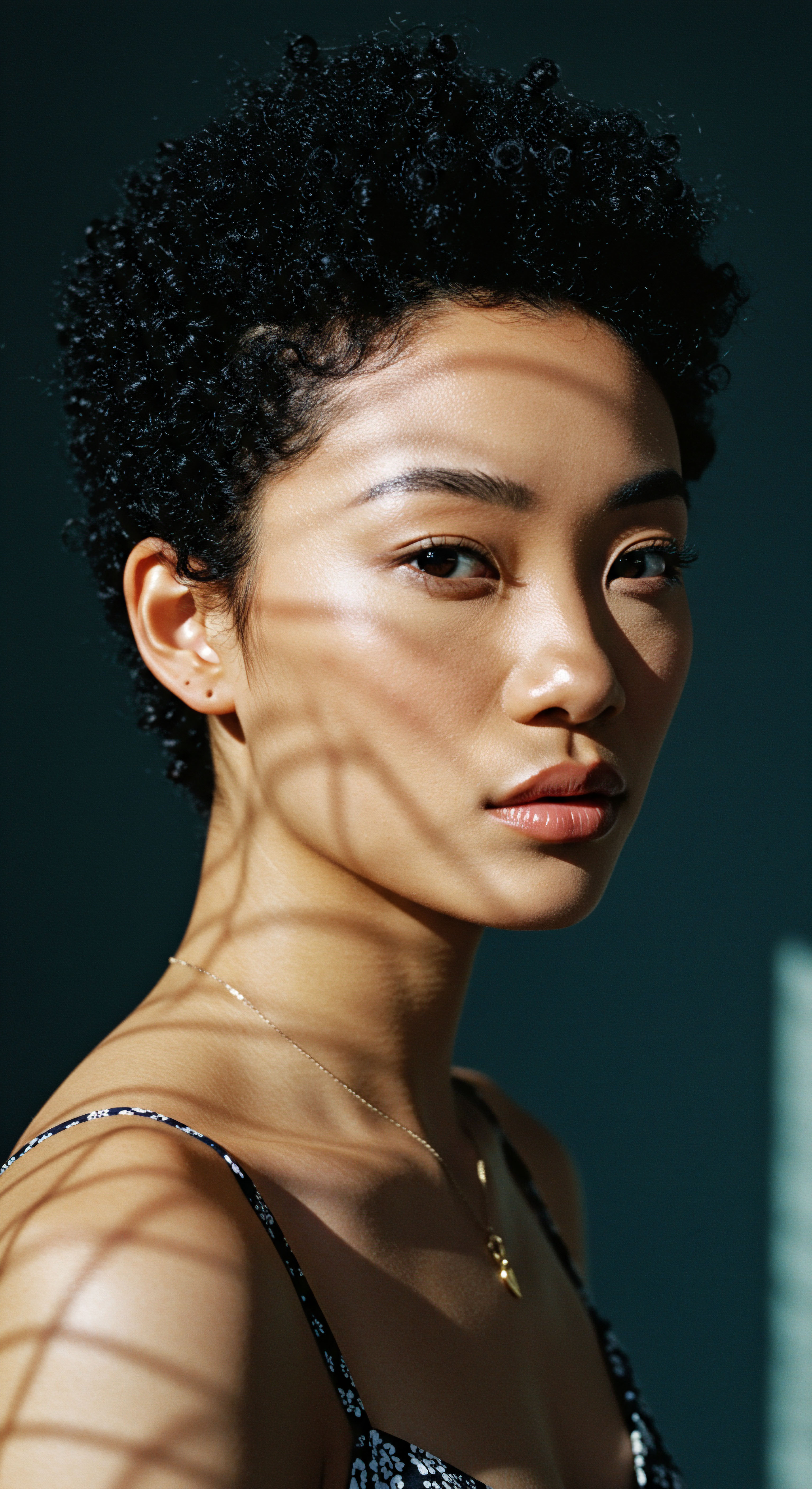
Hair Loss and the Weight of Cultural Practices
While many ancestral hair practices provided immense benefits, some, when applied without a complete understanding of biomechanics or material science, could contribute to hair loss conditions. A compelling example arises in the context of Central Centrifugal Cicatricial Alopecia (CCCA), a form of scarring hair loss predominantly affecting women of African descent. Research, including a systematic review by Aguh and colleagues, points to a complex etiology for CCCA, with factors like chemical relaxers, excessive heat, and tight hairstyles playing significant roles.
Some cultural styling practices, when applied with excessive tension, can lead to scarring hair loss.
While chemical relaxers are a modern invention, the cultural preference for certain straightened or tightly pulled styles often has roots in historical aesthetic standards. The tension applied in some traditional braiding or weaving techniques, if consistently high, can cause micro-trauma to the hair follicles over time, contributing to inflammation and eventual scarring characteristic of CCCA. This scientific understanding allows us to critically examine culturally significant practices, not to dismiss their value, but to adapt them with knowledge, ensuring they are truly protective and sustainable for long-term scalp health. This nuanced perspective allows for the preservation of cultural heritage while simultaneously mitigating adverse health outcomes through informed choices.
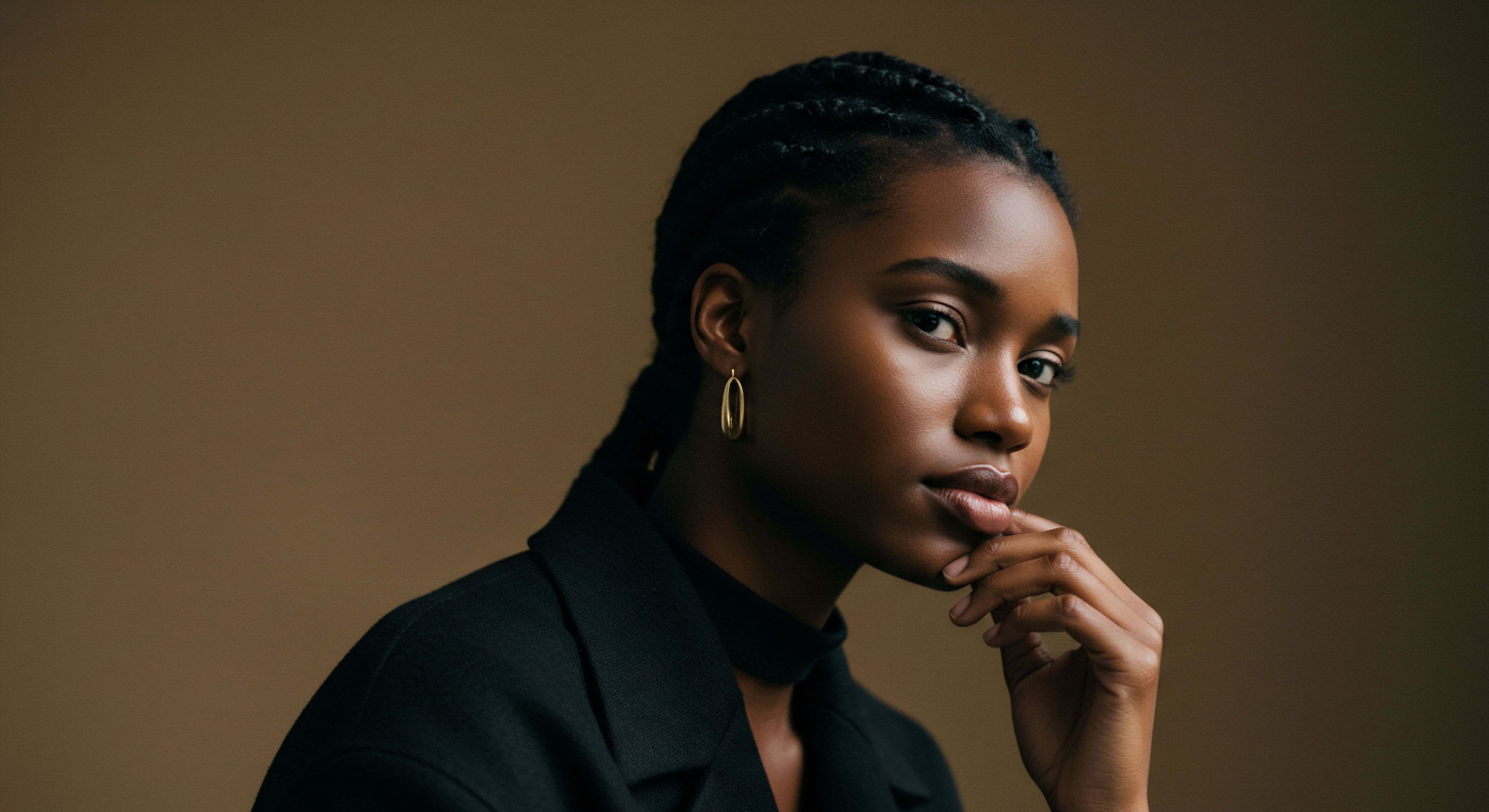
The Psycho-Social Dimension of Hair Care
Beyond the biological, hair care has always held profound psycho-social significance. In many ancestral communities, hair was a symbol of identity, status, spirituality, and beauty. The communal rituals of hair braiding or grooming fostered bonds, transmitted cultural knowledge, and provided a sense of belonging. These intangible benefits, though not quantifiable in a lab, contribute directly to overall well-being, which in turn influences physiological processes, including stress responses that can impact hair health.
Modern scientific understanding of the mind-body connection reinforces this. Chronic stress, for instance, can lead to conditions like telogen effluvium, where a significant number of hair follicles prematurely enter the resting phase, resulting in widespread shedding. The calming, communal aspects of traditional hair rituals, therefore, served as a natural buffer against stress, promoting a state of relaxation conducive to healthier hair growth. The scientific community is increasingly recognizing the powerful link between psychological well-being and dermatological health, including that of the scalp.
- Scalp Microbiome and its delicate balance.
- Fermented Rinses as a source of beneficial bacteria.
- Tension from certain styles and its link to hair loss.

How Does Diet Affect Scalp Wellness?
Ancestral diets, often rich in whole foods, lean proteins, healthy fats, and diverse micronutrients, inherently supported robust hair growth and scalp health. Before the advent of processed foods, communities consumed nutrient-dense diets that provided the building blocks for keratin, the primary protein of hair, and essential vitamins and minerals vital for follicular function. For instance, diets rich in omega-3 fatty acids, found in many traditional fish-consuming cultures, are now scientifically recognized for their anti-inflammatory properties, benefiting scalp conditions like dryness and irritation.
A deficiency in iron, zinc, or biotin, common in modern diets lacking diversity, can directly impact hair growth and lead to shedding. Ancestral foodways, with their emphasis on local, seasonal produce and animal proteins, naturally provided these essential elements. The connection is clear ❉ what we consume profoundly influences the health of our scalp and the vitality of our hair, a truth intuitively understood by those who lived in closer harmony with their environment.
| Nutrient Protein |
| Role in Scalp/Hair Health Keratin building block |
| Ancestral Dietary Sources Lean meats, legumes, eggs |
| Nutrient Omega-3 Fatty Acids |
| Role in Scalp/Hair Health Anti-inflammatory, scalp hydration |
| Ancestral Dietary Sources Fatty fish, flax seeds, walnuts |
| Nutrient Iron |
| Role in Scalp/Hair Health Oxygen transport to follicles |
| Ancestral Dietary Sources Red meat, spinach, lentils |
| Nutrient Zinc |
| Role in Scalp/Hair Health Cell growth, repair |
| Ancestral Dietary Sources Shellfish, nuts, whole grains |
| Nutrient Biotin (Vitamin B7) |
| Role in Scalp/Hair Health Keratin infrastructure support |
| Ancestral Dietary Sources Eggs, nuts, sweet potatoes |
| Nutrient A balanced diet is foundational for scalp and hair vitality. |
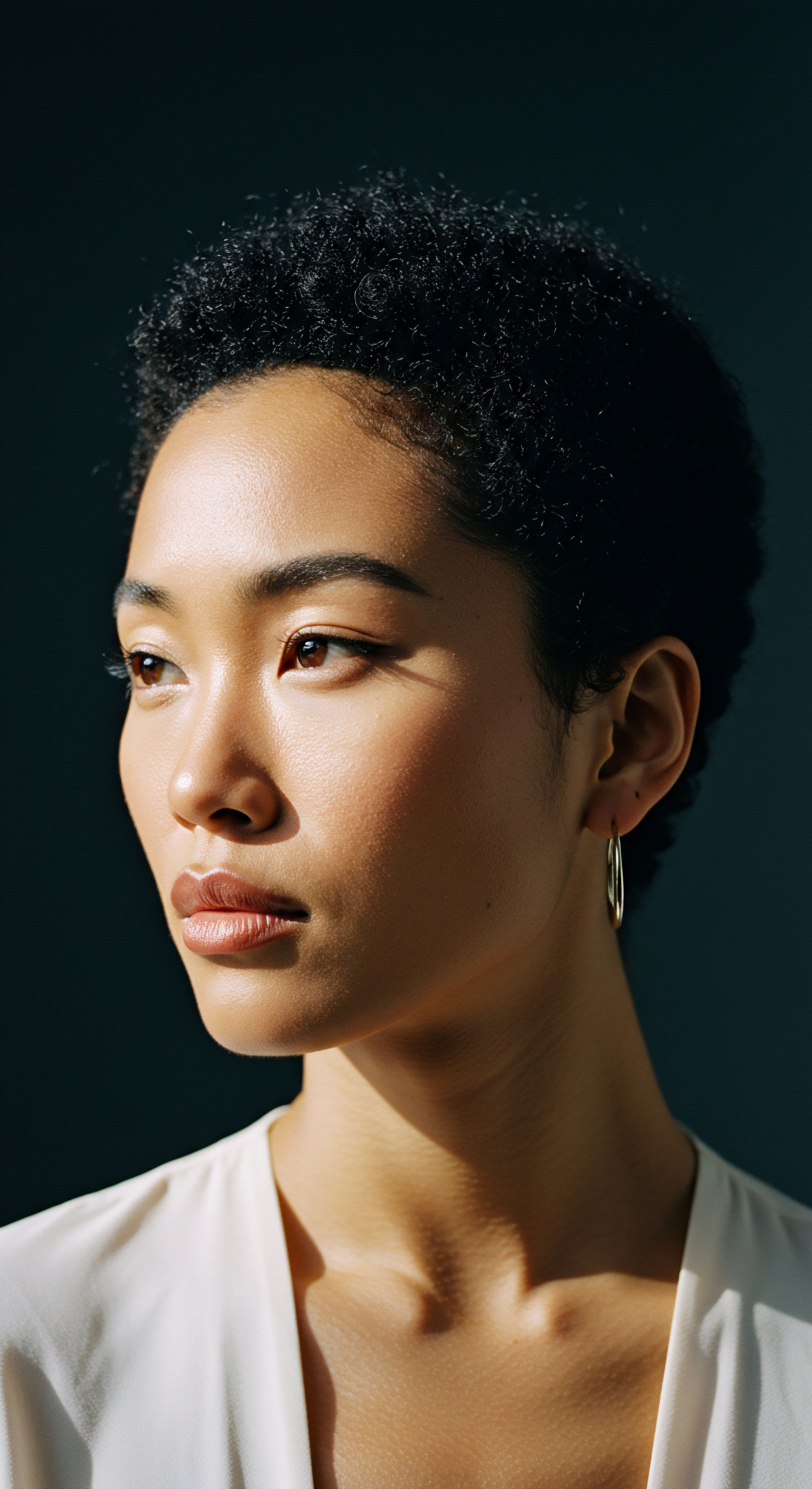
Reflection
As we close this thoughtful exploration, a profound understanding emerges ❉ the seemingly disparate worlds of ancestral hair traditions and modern scientific inquiry are, in truth, kindred spirits on a shared quest for wellness. The whispers of ancient wisdom, once dismissed as folklore, now find validation in the meticulous observations of laboratories and clinics. Our journey reveals that the intuitive care practices of our forebears, born from deep connection to nature and community, often laid the groundwork for what contemporary science now precisely articulates.
It is a powerful reminder that true progress often involves looking back, with reverence and curiosity, to inform our path forward. The legacy of resilient, radiant hair, passed down through generations, continues to guide us toward a holistic appreciation of our strands and the sacred ground from which they grow.

References
- Koyama, T. Kobayashi, K. Hama, T. Murakami, K. & Ogawa, R. (2016). Standardized scalp massage results in increased hair thickness by inducing stretching forces to dermal papilla cells in the human skin. Journal of Physical Therapy Science, 28(9), 2531–2535.
- Aguh, C. & McMichael, A. (2016). Central centrifugal cicatricial alopecia ❉ A systematic review. Journal of the American Academy of Dermatology, 75(5), 1014-1022.
- Khumalo, N. P. Gumedze, F. & Theron, G. (2007). Hair cosmetic practices and their relationship to hair and scalp disorders in women of African descent ❉ a review. Clinical Dermatology, 25(3), 295-299.
- Aguh, C. (2019). Hair Loss in Women of Color ❉ Medical and Surgical Approaches. Springer.
- Robins, A. H. (1991). Biological Perspectives on Human Pigmentation. Cambridge University Press.
- Halder, R. M. & Nedorost, S. T. (2018). Hair and Scalp Diseases ❉ Medical and Surgical Treatment. CRC Press.
- Puzey, J. (2013). Hair ❉ A Cultural History of Hair. Berg.